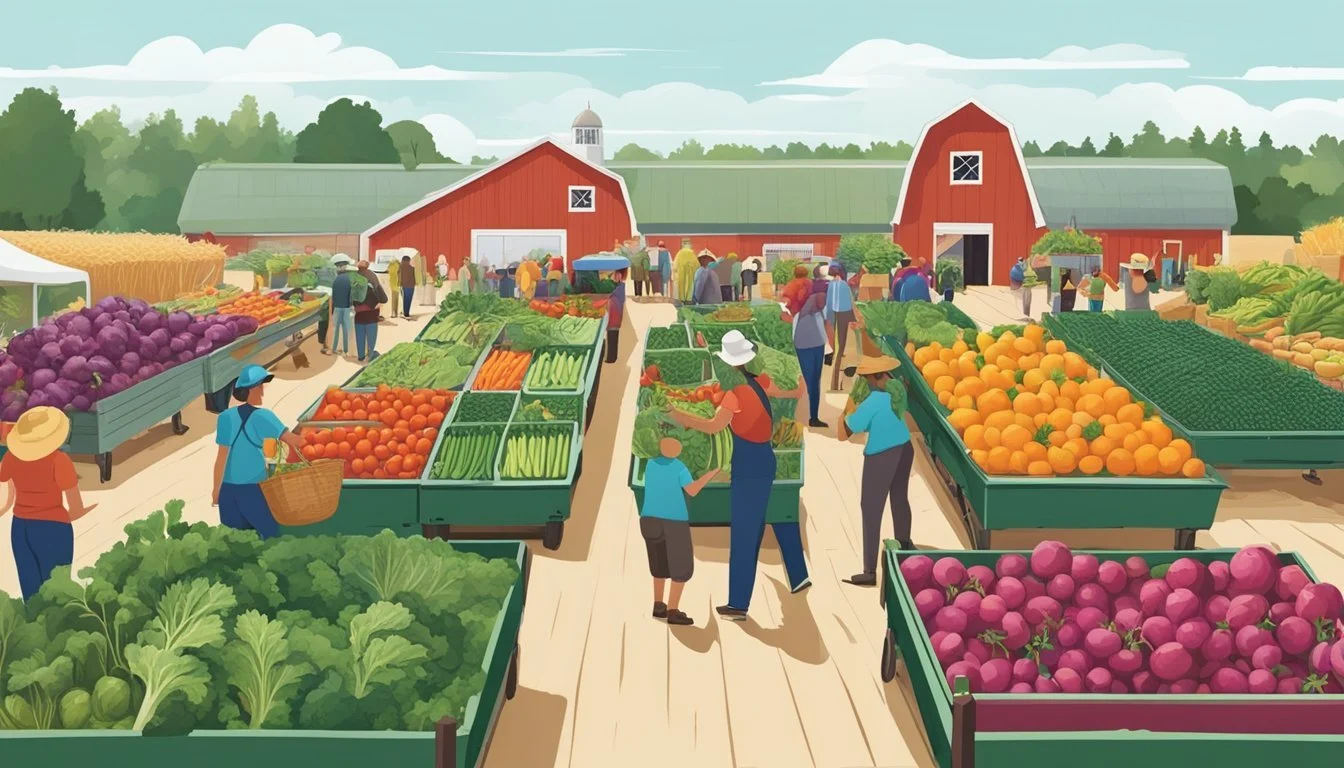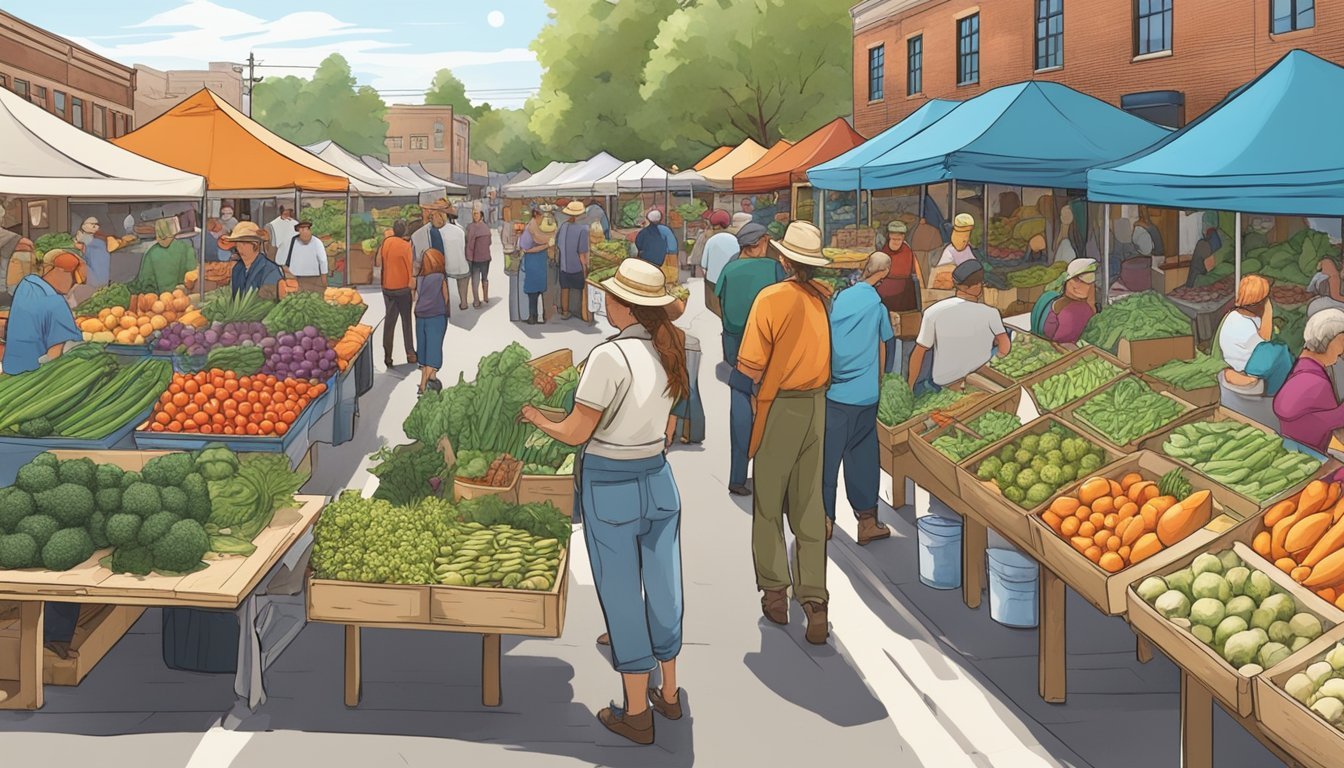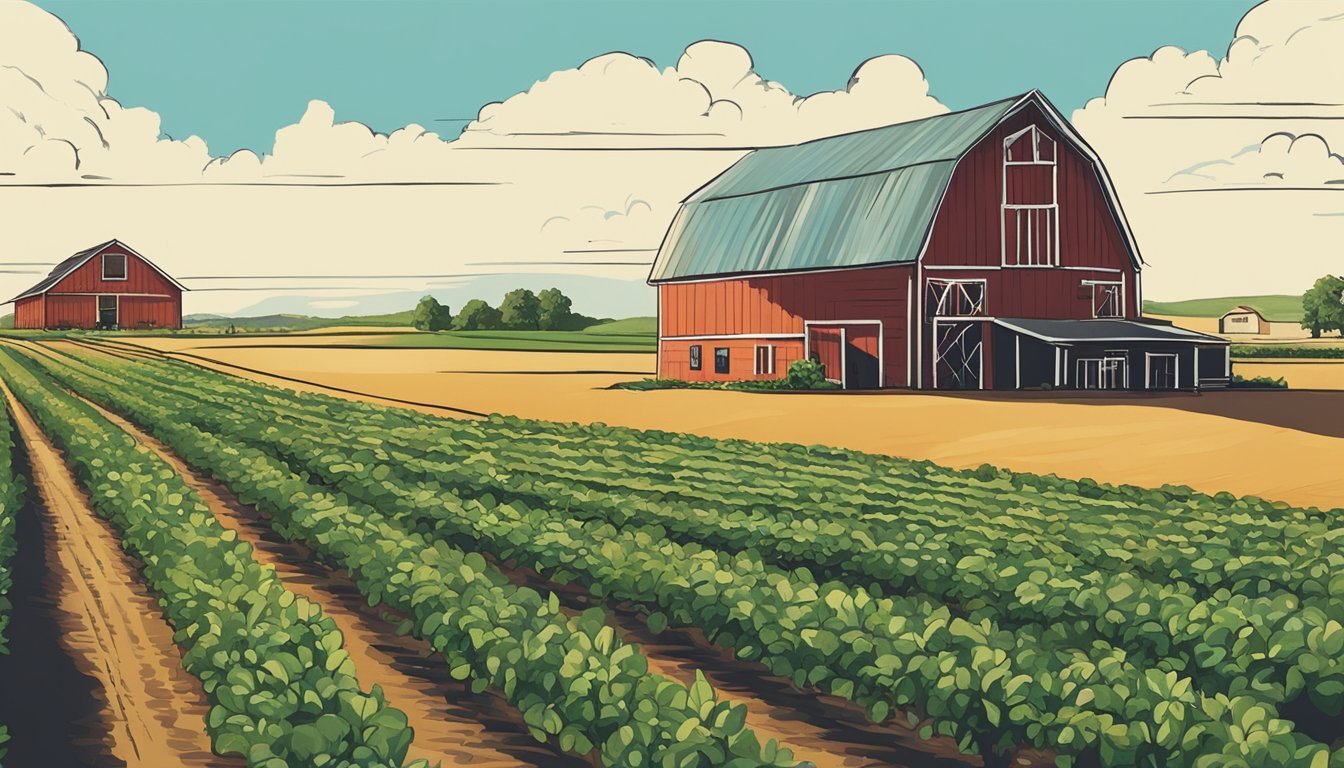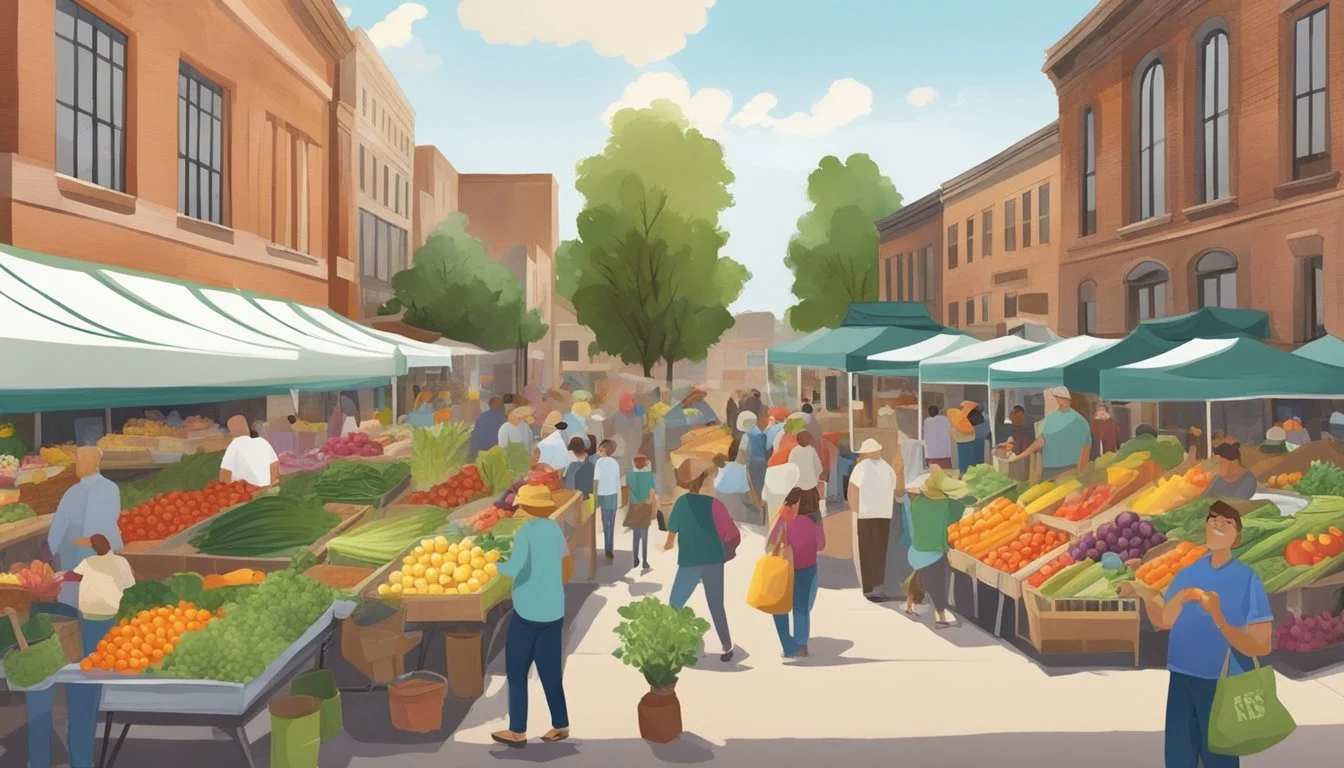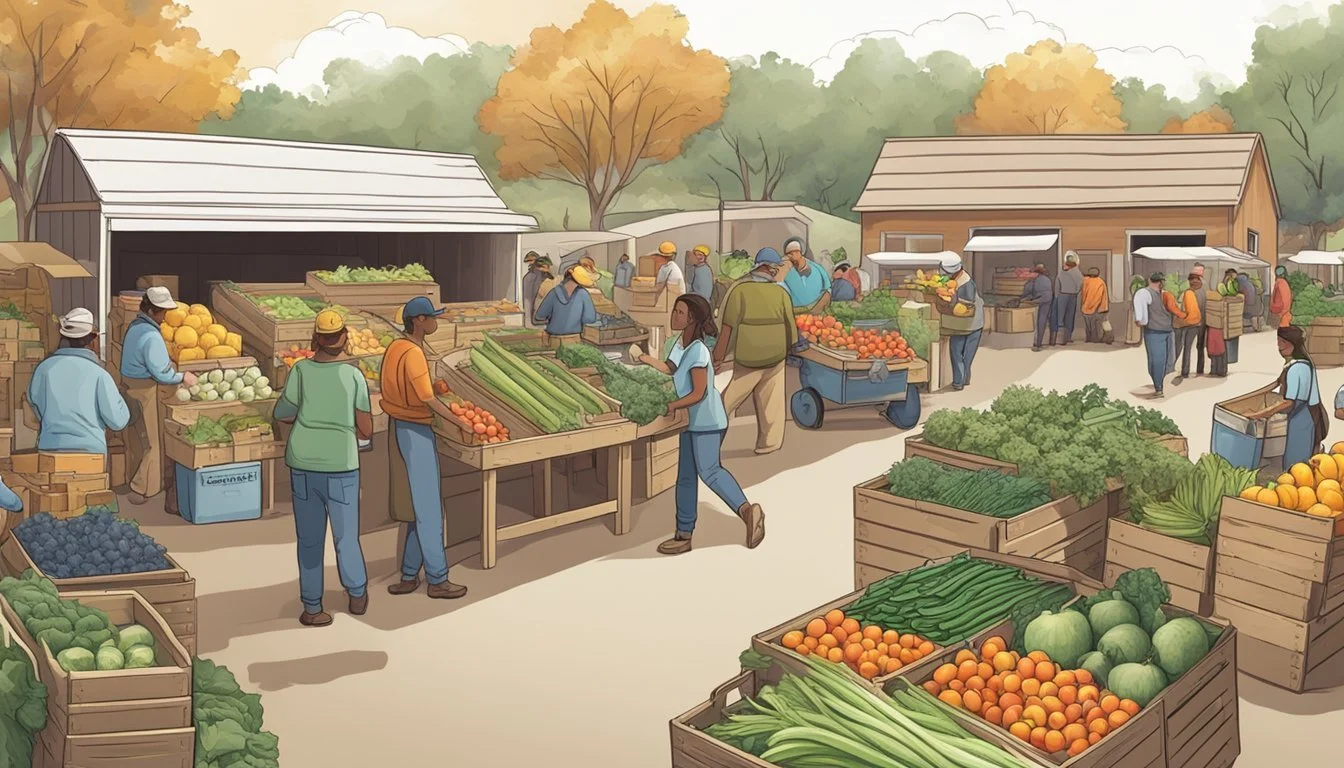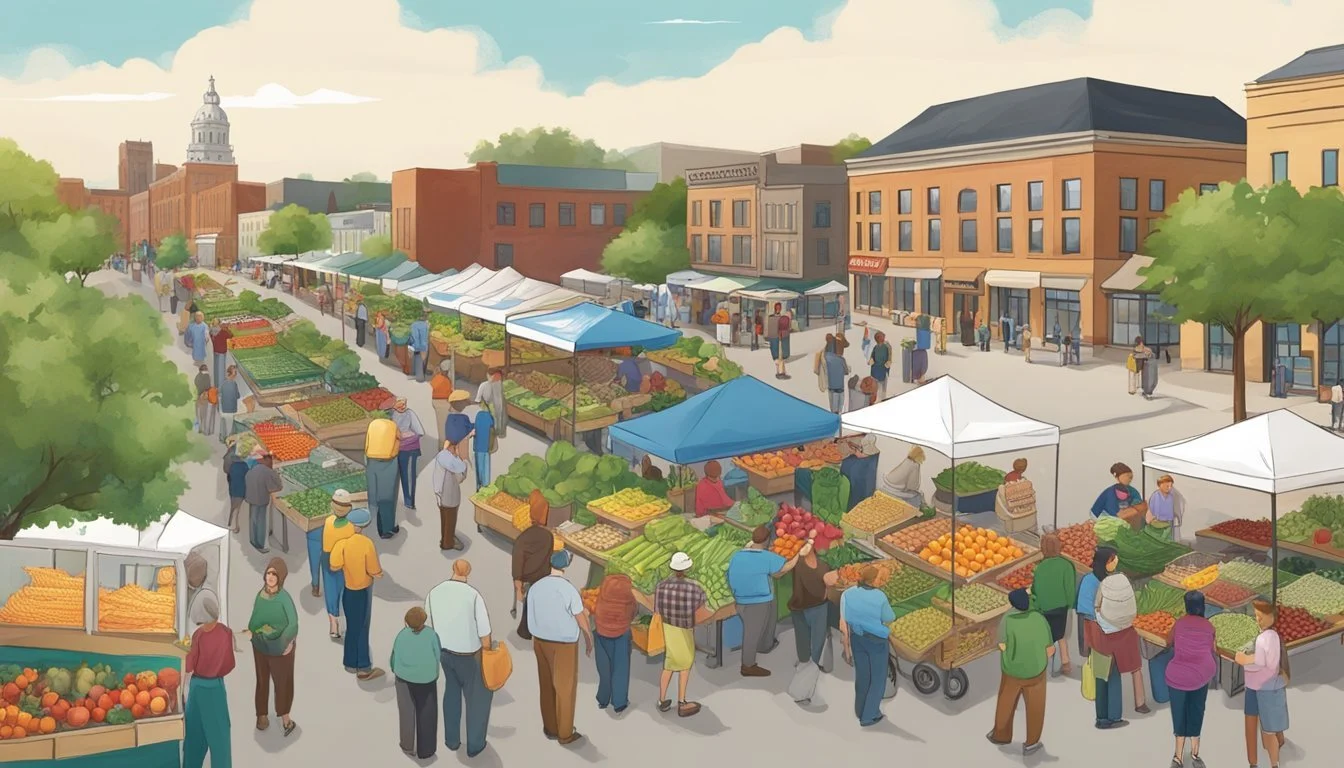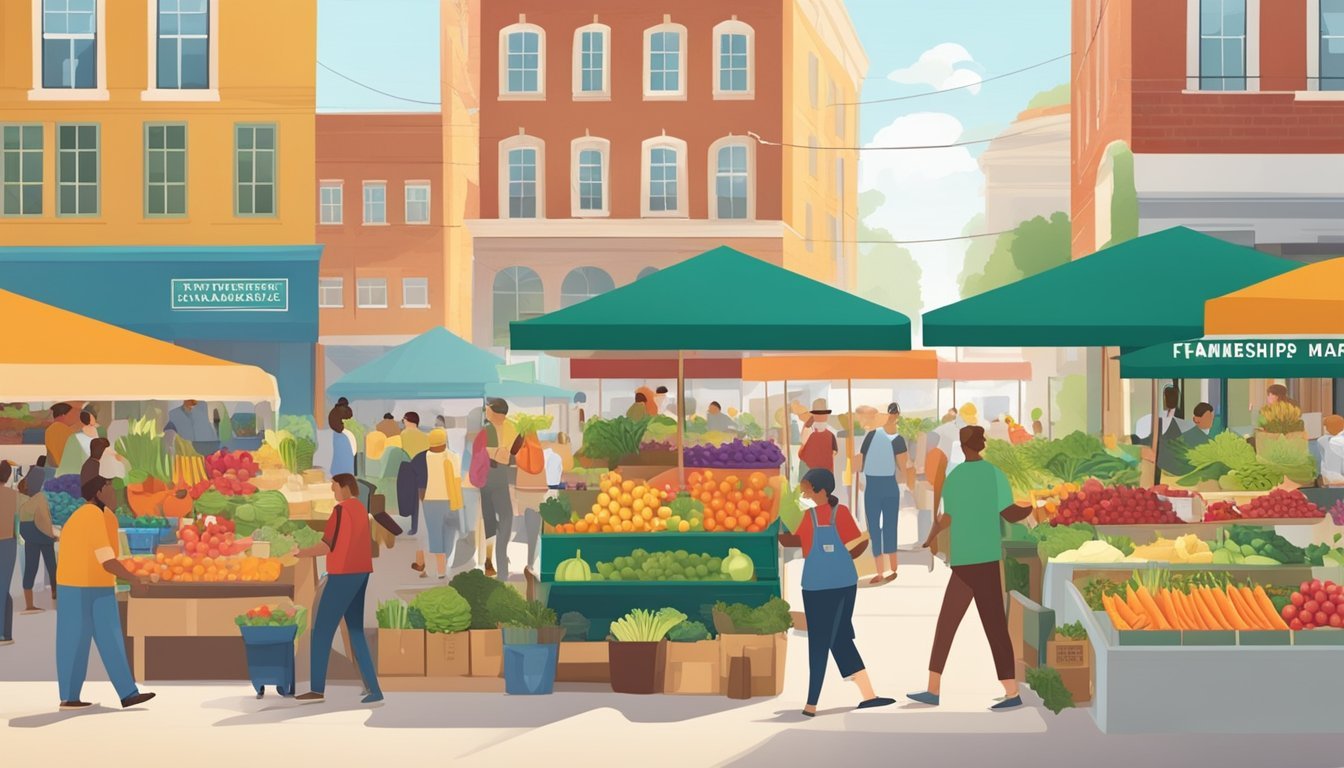Community Supported Agriculture (CSA) in Sioux Falls, SD
A Guide to Local Produce Partnerships
Community Supported Agriculture (CSA) is a form of direct farm-to-consumer sales model that has become increasingly popular in many areas, including Sioux Falls, SD. This system allows consumers to purchase shares of a farm's harvest in advance, providing them with a regular supply of fresh, locally-grown produce. By engaging in CSA, members have the opportunity to enjoy seasonal food while also supporting farmers in the Sioux Falls region.
The region of Sioux Falls boasts a variety of CSA programs, each offering an array of farm products, often including more than just vegetables. Members of the community can invest in these local farms, receiving not only products but also an understanding of where their food comes from. Such direct relationships between consumers and farmers foster a sense of community and shared commitment to sustainable agriculture.
CSA's role in Sioux Falls extends beyond consumer experience by providing economic stability for local farmers. By paying for produce upfront, members give farmers the working capital needed at the start of the growing season. This economic support helps to mitigate some of the risks farmers face due to weather and market fluctuations, and assures the continuation of family-owned and operated farms in the region.
Overview of CSA
Community Supported Agriculture represents a grassroots food distribution network that closely ties farmers and consumers. This section delves into its definition, historical background, and operational models within Sioux Falls, SD.
What Is CSA?
Community Supported Agriculture (CSA) is a partnership where individuals buy shares of a farm's projected harvest. It's akin to purchasing a subscription where members receive a weekly or bi-weekly supply of locally-grown, seasonal produce directly from the farm. The consumer's upfront commitment ensures a steady revenue for farmers and fosters a strong sense of community by sharing the risks and benefits of food production.
History and Evolution of the CSA Movement
The CSA movement was initiated in the 1960s in Japan and Switzerland as a response to concerns about food safety and the urbanization of agricultural land. It reached the United States in 1985 by way of Robyn Van En, a Massachusetts farmer. Rapidly gaining traction, by 1990, the number of CSA farms had grown significantly, and they continue to expand today, driven by rising consumer interest in sustainable and community-focused food systems.
CSA Models and How They Work
CSA models vary, but typically, they follow a structure where consumers purchase a membership at the beginning of the growing season. Memberships function as a pledge to support the farm operation, and in return, members receive a portion of the farm's harvest. This can include:
Standard Share: A diverse assortment of produce suitable for small households.
Full Share: Larger quantities designed for families or individuals with higher consumption needs.
Specialty Share: May include items like meats, cheeses, flowers, or other artisanal products in addition to vegetables.
Members pick up their shares at designated locations, offering them an opportunity to engage with their food source and build relationships within the community.
Local Impact of CSA
Community Supported Agriculture (CSA) programs in Sioux Falls, SD, have brought considerable benefits to the local community, boosting the local economy and contributing to environmental sustainability.
Benefits to Sioux Falls Community
CSA programs foster strong relationships between Sioux Falls farmers and community members, enhancing the local support for agriculture. This model ensures that community members receive fresh, locally grown produce, often through weekly shares or subscriptions. The direct interaction increases transparency about food production practices and nurtures a sense of community involvement and shared commitment to local farmers.
CSA and Local Economy
CSA programs contribute to the local economy in meaningful ways. By participating in a CSA:
Residents keep their money within the Sioux Falls community, supporting their neighbors and reinvesting in the local economy.
Local farmers gain a reliable income source, which helps stabilize farm income and can contribute to farm improvements and expansions, securing a future for local, sustainable agriculture.
Environmental Advantages
Environmental benefits from CSA programs are notable within the Sioux Falls region:
CSAs emphasize sustainable farming practices, reducing the reliance on pesticides and chemical fertilizers.
The carbon footprint related to transportation is minimized as products are not shipped over long distances, unlike most supermarket foods.
These practices have a direct positive impact on the local environment, promoting biodiversity and soil health while reducing pollution and conserving resources.
How to Participate in CSA
Participating in a CSA involves selecting the best fit for one’s produce needs, understanding the types of shares available, and navigating the subscription process effectively. Ensuring a good match between the CSA and the subscriber enriches the experience for both the member and the local farm.
Choosing the Right CSA for You
When selecting a CSA, individuals should consider location, produce variety, and pick-up options. Sioux Falls residents can explore local farms such as Deep Root Gardens, which is situated nearby. Investigating the types of produce offered and whether additional farm products like eggs or honey are available is important. Potential members may also prefer a CSA that offers various pick-up locations or one that is convenient to their home or workplace.
Understanding CSA Shares
CSA shares typically involve a prepaid subscription where members receive a regular allocation of seasonal produce. Shares can be full or half-sized, catering to different household needs. For example, a full share might be ideal for a family, while a half share could suffice for an individual or couple. Some CSAs may offer flexibility in the types of shares, including options for meats, dairy, and other products.
Subscription Process
To subscribe to a CSA, one often goes through an online sign-up process. It usually entails selecting the desired share type and frequency of delivery or pick-up. Payment plans might be available, ranging from a single upfront payment to more flexible installment plans. It’s essential to understand the terms and schedule of the CSA to avoid missing out on deliveries. For instance, the season typically runs from May to October, with a common 20-22 week span for share distribution.
CSA Farms in Sioux Falls
Community Supported Agriculture in Sioux Falls connects residents with fresh, locally-sourced produce through a network of family-run farms. This thriving CSA landscape offers a diverse range of crops grown with a commitment to sustainable farming practices.
Directory of CSA Farms
Farm Name Location Deep Root Gardens Worthing, SD Good Earth Farm Sioux Falls Area Glory Garden Sioux Falls Area
These CSA farms near Sioux Falls offer shares that the community can purchase, fostering a direct partnership between local farmers and consumers.
Specialty Crop Selection
Deep Root Gardens specializes in pesticide-free vegetables, establishing its roots after a year of farm apprenticeship and learning through the Farm Beginnings program. Glory Garden offers an array of produce to its community, while Good Earth Farm, known for its certified organic produce, provides a wide spectrum of vegetables that cater to the preferences and nutritional needs of the local community.
Farm Practices and Certifications
CSA farms in the Sioux Falls area prioritize eco-friendly and sustainable farm practices. Many farms in the region, including Good Earth Farm, maintain certified organic status, which assures that the food is grown without the use of synthetic pesticides and fertilizers. These certifications are crucial indicators of a farm's commitment to sustainable agriculture and healthy food for the community.
Member Experience
Participating in a CSA program in Sioux Falls, SD, provides individuals with an opportunity to immerse themselves in local agriculture. Members can anticipate fresh, seasonal produce and cultivate a personal connection with the farmers who grow their food, fostering a strong sense of community and shared commitment to sustainable practices.
What to Expect as a CSA Member
As a CSA member, individuals purchase a share of the harvest from a local farm. Throughout the growing season—typically from June to October—they receive a weekly or bi-weekly assortment of freshly picked produce. The contents of the shares vary based on the season's yield. Members should expect an array of vegetables and sometimes additional farm products like honey or eggs.
Variety
Each Weekly Share: Diverse selection based on availability
Seasonal Changes: Adaptable contents to reflect harvest
Volume
Single or Family Share: Catered to individual or family needs
Abundance: Periods of plentiful harvest may increase share size
Communication and Relationship with Farmers
Through CSA membership, individuals establish a direct line of communication with the farming team. They receive regular updates about the farm's activities, learn about the growing methods, and understand the challenges and successes that come with local agriculture. This relationship not only educates members about sustainable farming but also vanishes the anonymity prevalent in typical consumer-producer dynamics.
Updates & Newsletters: Farmers share stories, recipes, and farm news
Farm Visits: Opportunities to tour the farm and talk to the farmers
Engagement and Community Building
Membership in a CSA goes beyond the food. It's about being part of a community that supports local farmers and sustainable agriculture. Many CSAs host events like potlucks, workshops, and harvest festivals, offering a space for members to connect and foster a sense of community.
Events & Workshops: Hands-on experiences that promote education and bonding
Volunteer Opportunities: Chances to help on the farm and learn about agriculture
Agricultural Education and Events
Community Supported Agriculture (CSA) in Sioux Falls, SD offers a range of educational activities and events that focus on sustainable farming practices, food preparation, and community involvement. These opportunities strengthen the bond between local farmers and community members, promoting an understanding of where food comes from and how it's grown.
Workshops and Cooking Tips
CSA programs in the Sioux Falls area regularly host workshops aimed at educating members on various aspects of agriculture, including best practices for organic farming and garden maintenance. Participants often have the chance to learn directly from farmers about producing food sustainably. Additionally, cooking workshops provide tips on how to prepare fresh, seasonal produce, turning the bounty of the harvest into nutritious and flavorful meals.
Farm Tours and Agritourism
Farmers in the Sioux Falls region welcome the community to experience agriculture firsthand through organized tours. These tours offer a transparent look at farming operations and allow visitors to learn about the roles they play in the food system. Agritourism activities strengthen rural economies and foster appreciation for the agricultural lifestyle while educating on the importance of supporting local farms.
Community Events and Volunteer Opportunities
CSAs tend to be active in local events, showcasing their produce and sharing their knowledge with the community. Events like Ag Day provide platforms for outreach and education on agriculture's role in society. Furthermore, volunteer opportunities with CSAs and other farm-related events give community members a hands-on experience, contributing to the local food movement and gaining insight into the effort required to sustain it.
CSA Logistics
The logistics of Community Supported Agriculture in Sioux Falls, SD are designed to address the unique challenges posed by local conditions, such as weather patterns, and to ensure convenient distribution to members. This involves the careful coordination of pick-up locations and schedules, as well as meticulous preparation of the CSA boxes.
Managing Weather and Seasonal Changes
Sioux Falls experiences a range of weather conditions that impact CSA operations. Farmers must plan planting schedules carefully to avoid losses due to frost or overheating. Deep Root Gardens, for example, takes advantage of South Dakota's growing seasons by adapting their CSA model accordingly, ensuring that members receive a steady supply of fresh produce throughout the year.
Pick-Up Locations and Schedules
Members typically have designated pick-up locations and schedules to receive their shares. For example, Warner's Produce offers the option to collect CSA bags at the Falls Park Farmer's Market on Saturdays. To cater to varied customer needs, some CSAs in Sioux Falls provide a delivery option, which usually extends up to a 10-mile radius from the central pick-up point.
Pick-up schedule for Summer CSA (June 1st - October 12th):
Falls Park Farmer’s Market: Saturdays
Brandon Farmer’s Market: Saturdays
Home Delivery: +$5/week within a 10-mile radius of Sioux Falls
Box Contents and Preparation
Each CSA share typically includes a box of vegetables that may vary weekly based on seasonal availability. Farmers ensure that the produce is harvested at peak freshness. Vegetables are cleaned, sorted, and packaged meticulously before distribution. For example, a standard CSA share may be delivered in a reusable bag with an assortment of locally grown, pesticide-free ingredients, providing nourishment straight from the farm to the table.
Financial and Economic Considerations
When examining Community Supported Agriculture (CSA) financially and economically, several aspects come into play. These include how pricing and value are determined, the impact of supporting local farms on the economy, and the role of government incentives.
Understanding CSA Pricing and Value
CSA pricing structures are often straightforward, with members typically paying between $400-$700 annually for a share of the farm's harvest. The value afforded to members goes beyond the actual produce; it includes the assurance of supporting local agriculture and often involves receiving a greater diversity of crops throughout the season. Costs may vary depending on factors such as farm practices, the variety of produce offered, and share sizes.
Economic Impact of Supporting Local Farms
Supporting CSAs has tangible economic impacts. By investing in a share of Deep Root Gardens or similar local farms, consumers keep money circulating within the Sioux Falls area, bolstering the local economy. This model ensures that farmers receive a fair payment for their produce, stabilizing their income and, in turn, supporting local economies. According to the U.S. Department of Agriculture, CSA’s accounted for $225 million of the $2.9 billion in direct-to-consumer sales by farms.
CSA and Government Incentives
The U.S. Department of Agriculture recognizes the importance of CSAs and supports them through various programs. For eligible members, the Supplemental Nutrition Assistance Program (SNAP) can be used to purchase CSA shares, encouraging healthier eating habits among low-income households. This not only provides financial support to the member but also guarantees a stable customer base for the farm.
Nutrition and Health
Community Supported Agriculture (CSA) in Sioux Falls, SD, contributes to the health and nutrition of the community. CSA members enjoy the advantages of fresh farm products, including an array of vegetables that are pivotal for maintaining a balanced diet.
Health Benefits of CSA Produce
Individuals participating in a CSA typically have access to a variety of fresh, locally grown vegetables known for their high nutrient content. These farm products are often harvested at their nutritional peak, offering higher levels of vitamins and minerals compared to store-bought alternatives that may have traveled long distances and lost nutritional value over time.
Nutrition Education and Recipes
CSAs often provide more than just produce; they also offer nutrition education and recipes to help members utilize the full spectrum of vegetables provided. This education comes in the form of newsletters, cooking demonstrations, or online resources, equipping participants with the knowledge to prepare healthy meals and maximize the nutritional benefits of their seasonal farm products.
Food Systems and Sustainable Eating
By supporting CSAs, consumers play an active role in fostering sustainable food systems. These local food networks reduce carbon emissions associated with transportation of food products and encourage sustainable eating practices. The consumption of seasonal vegetables from CSAs promotes a diet that aligns with regional growing cycles and supports environmental stewardship.
Challenges and Opportunities
In Sioux Falls, SD, Community Supported Agriculture (CSA) faces both challenges that need addressing and opportunities that could fuel its growth. Exploring these aspects is crucial to understanding the future of local agriculture and food security.
Addressing Common Concerns
Challenges: Sioux Falls CSA farms are navigating difficulties such as unpredictable weather patterns impacting crop yields and market saturation from increasing numbers of CSA providers. The primary concerns for consumers usually revolve around the cost of shares and the variety of produce offered.
Opportunities: To address these challenges, CSA programs are researching innovative methods to diversify their crops and extend their growing seasons. They are also aiming to provide more flexible share prices to include a wider demographic, potentially utilizing online EBT systems for payment.
Future of CSA in Sioux Falls
Questions and Research: The sustainability of CSA in Sioux Falls is underpinned by consumer interest and farm viability. Questions regarding how to maintain and increase customer commitment throughout seasonal fluctuations remain. Ongoing research is directed at understanding market demands and improving CSA models to ensure stability and growth.
Innovations and Future: There is a significant opportunity to expand CSA programs by integrating more efficient distribution methods and enhancing online engagement to bolster customer retention and support.
Innovations in CSA Models
Innovations: CSA models are evolving beyond the traditional pre-paid subscription box. Innovations include customizable share options and value-added products to meet diverse customer preferences, thereby increasing the appeal and accessibility of CSA programs.
CSA Farms: Sioux Falls CSA farms are integral to the adoption of these innovations. They are incorporating technology for better farm management and customer service, such as CSA management software showcased by CSAware, which can support online EBT and improve logistical operations.
Through strategic research and application of innovative practices, CSA in Sioux Falls can overcome current challenges and capitalize on opportunities to ensure a robust future in the local food system.
Marketing and Promotion
The promotion of Community Supported Agriculture in Sioux Falls, SD, hinges on effective marketing strategies, partnerships with local businesses, and a vibrant online presence. These avenues ensure that CSA farms maintain visibility and attract a committed customer base.
Strategies for CSA Farms
CSA farms employ a variety of marketing strategies to attract and retain members. They often participate in local farmers markets where they can directly interact with potential customers, showcase their produce, and communicate the benefits of joining a CSA. Branding plays a crucial role in differentiating each CSA farm, with an emphasis on attributes such as organic practices, family-run operations, or pesticide-free products.
Collaborations with Restaurants and Markets
Partnerships with local restaurants and markets are instrumental in establishing a CSA's reputation. By supplying fresh, high-quality produce to these venues, CSA farms tap into the credibility and customer base of established businesses. These collaborations often serve as a testimony to the quality of the CSA's products and bolster promotional efforts through word-of-mouth.
Online Platforms and Social Presence
A strong online presence is essential for CSA farms to reach a broader audience. They typically leverage platforms like CSAware to manage subscriptions and facilitate customer interaction. Social media platforms, such as Facebook and Instagram, are used to engage with the community, share updates, and promote seasonal offerings. Online tools also enable CSAs to support initiatives like electronic benefits transfer (EBT) programs, making their produce accessible to a wider demographic.
The integration of marketing efforts across different channels ensures that CSA farms in Sioux Falls maximize their reach and sustain a thriving, community-supported enterprise.


